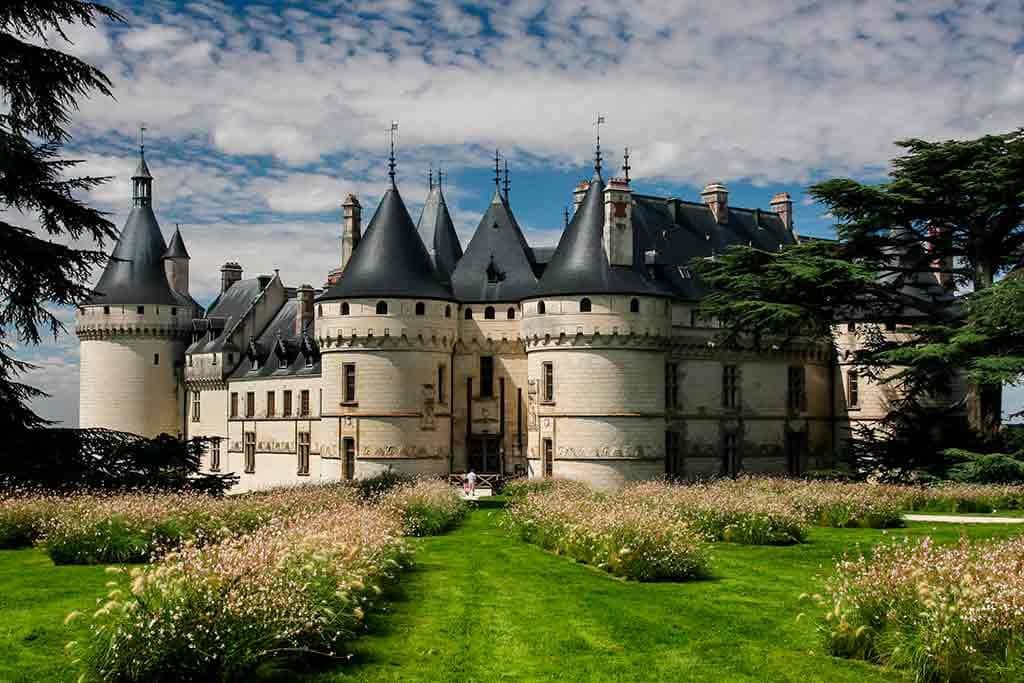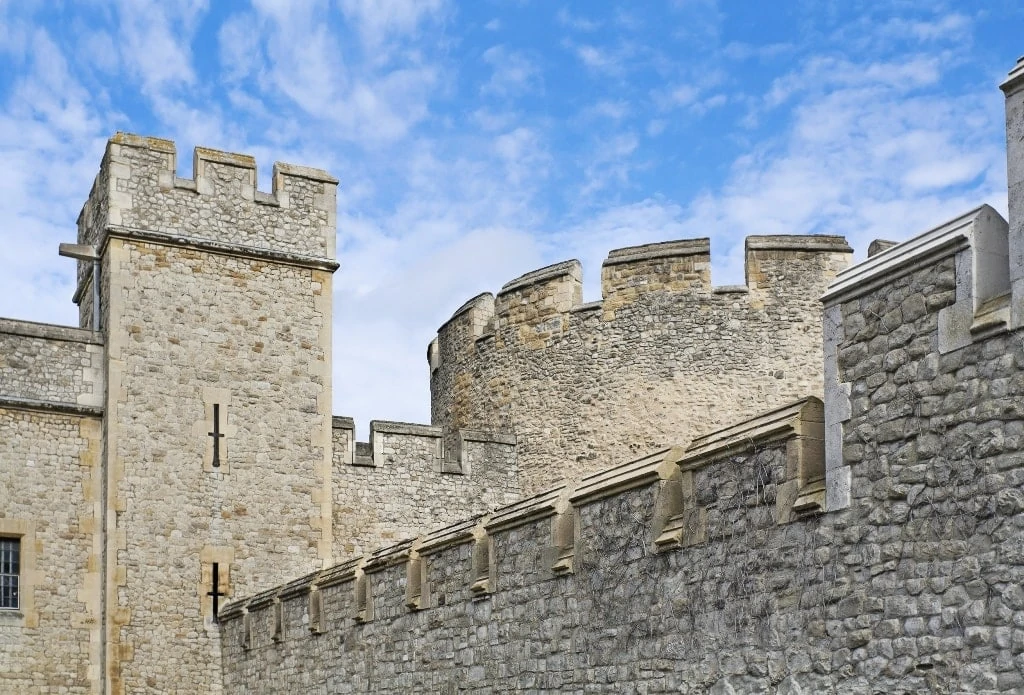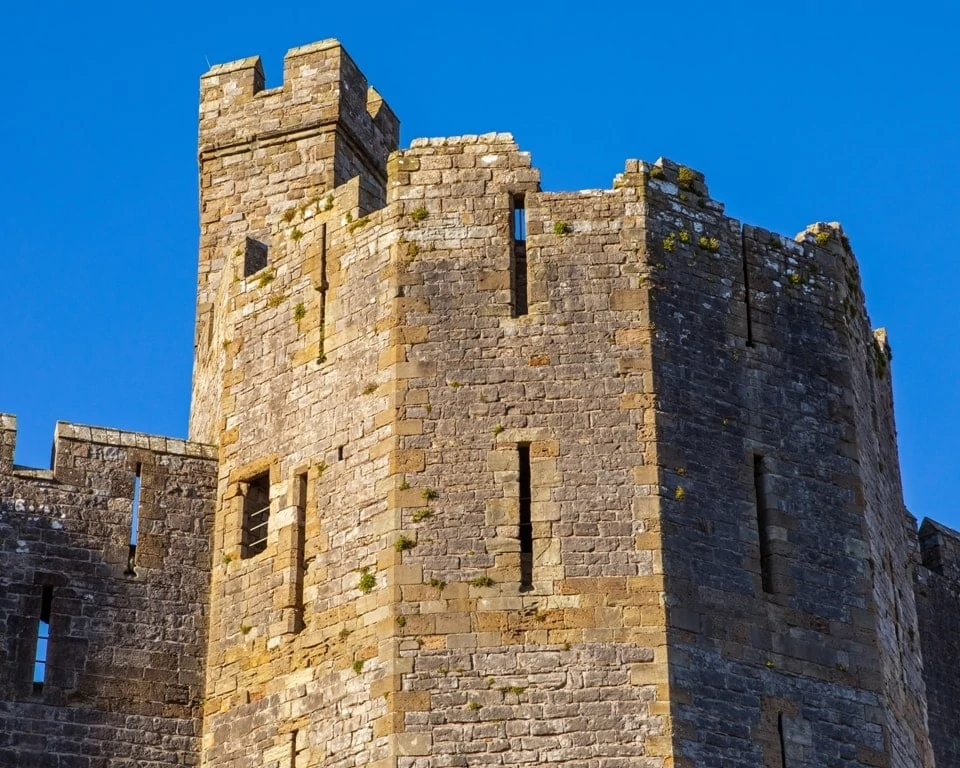Castle turrets are essentially small towers that were built into medieval castle fortifications, most typically walls and towers. The name ‘turret’ comes from the Italian torretta, meaning ‘little tower’, and the Latin word turris meaning ‘tower’.
Castle turrets developed out of the need for increased defensive capabilities and were highly effective in providing defenders with a greater field of vision – crucially, turrets allowed garrison soldiers better see the adjacent walls of the wall or tower they were mounted on.
They would then be able to fire upon besiegers who were attacking these fortifications.
Turrets appeared in many medieval castles, particularly in the later middle ages. As the military function of castles declined, so too did the use of turrets – castles were increasingly replaced by artillery forts, meticulously engineered fortifications designed to mitigate the effects of gunpowder cannon which became commonplace in siege warfare during the late 15th and 16th centuries.
However, turrets did not disappear altogether as an architectural feature. They were particularly popular in the Scottish Baronial Style which emerged during the 16th and 17th centuries across small castles and tower houses in Scotland and Northern Ireland (Newark Castle in Port Glasgow has some good examples).
Turrets have persisted into modernity too and can be seen on both residential and commercial buildings.

Description of Castle Turrets
Although they varied in size, turrets had the same basic design features. They had the appearance of small towers and were built into existing walls or larger castle towers.
They also projected outwards slightly from the structure they were built onto – it was this projecting position that afforded turrets a greater line of sight and allowed soldiers in them to direct fire onto any enemy attacking the adjacent walls.

Turrets can typically be found positioned on the corners of towers, or at the point where two walls meet, although they also appear mid-way along curtain walls.
Because they projected out of the exterior surface of an existing tower or curtain wall, turrets were usually fairly small in size, as large turrets would add a great deal of stress and pressure to the wall itself.
Because they did not reach the ground, their weight had to be entirely borne by the structure that they were built onto, which limited their size.
Consequently, in order to support their weight, corbels were used in the construction of turrets – a corbel is a solid piece of masonry (although they could also be built of wood in some cases) which juts out from an exterior wall in order to support a structure above it (in this case the turret).
Generally, the turret itself would be constructed of stone, usually of the same material as the wall or tower which supported it so that the turret would blend in with the structure.
At the top, the turret could be crenelated or else built with a roof (often pointed) that protected the structure from the elements.
Turrets that were taller than the building they were built onto would contain a staircase so that the garrison troops could reach the top, although many turrets were built at the same height as the main structure.
In these cases, the turret functioned much like an extension to the interior of the castle tower or wall.
Function of Castle Turrets
The primary reason behind the construction of castle turrets was military. Thanks to the fact that they projected away from the exterior of castle walls or towers, turrets gave the garrison a greater line of sight.
Soldiers inside the turret could more easily view the exterior of the tower or curtain walls adjacent to the turret itself, and fire upon besiegers who gathered at the base of those walls. In this way, they functioned much like a bartizan.

Turrets also provided the castle garrison with improved views of the surrounding countryside – this was particularly true of tall turrets which projected from castle towers.
These turrets built at great heights provided a 360-degree vision of the approaches to the castle, allowing the defenders of the fortification to see an enemy coming a long way off, and giving them more time to prepare for a siege.
Therefore, turrets essentially fulfilled the functions of a watchtower as well as being militarily useful in the event of a siege assault, and not so vulnerable to assault as a freestanding watchtower.
The great Eagle Tower at Caernarfon Castle in Wales has three very tall turrets which greatly increased the ability of the garrison to spot the movements of enemy forces.

Thank you I saw a turet on a house here in Frederick today and thought much as you say.